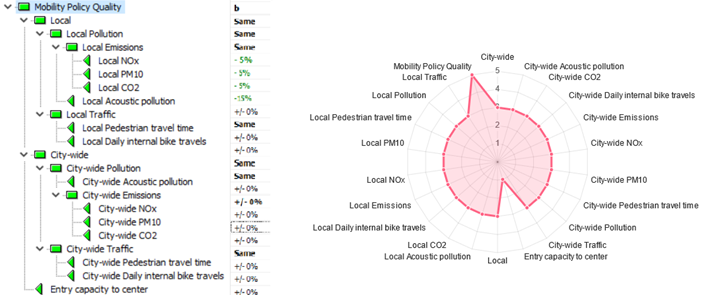Decision-making methods
The decision-making process is essential when it comes to addressing any decision, it aims to solve problems and give a set of options or alternatives, which represent some actions either, choose an option that best satisfies the goals or rank the options according to predefined goals or criteria. The decision process is to solve a decision problem, that is, to make a decision, including a set of steps: assessing the problem, collecting and verifying information, identifying options, anticipating the impact or consequences of such decisions, making an informed decision and evaluating its impact.
A Decision Support System (DSS) manages data and models, and assists (no replaces) managers in their decision processes in semi-structured/unstructured tasks, aiming to improve the quality of decisions.
Multi-Criteria Decision Making (MCDM) or Multi-Criteria Decision Analysis (MCDA) is a highly accurate method of decision-making, that considers both qualitative and quantitative criteria that must be established in order to identify the optimal solution.
It is important to discuss the key concepts of MCDM, which include:
- Decisions: They vary depending on the type of problem, which can include choice, ranking, and sorting problems.
- Alternatives: These refer to the different possible courses of action.
- Decision variables: These are components of the vector representing alternatives.
- Decision space: It represents the feasible alternatives.
- Criteria: These serve as tools for evaluating and comparing alternatives based on the consequences of their selection.
- Preferences: They relate to how well an alternative fulfills the decision-maker's needs with respect to a given attribute.
- Attributes: These are measurable characteristics of an alternative.
- Attributes: qualitative variables that represent decision subproblems,
- Scales: ordered or unordered sets of symbolic values that can be assigned to attributes,
- Measures: These are elements used to quantify an alternative's attribute by assigning numerical values or symbols.
- Aggregation: It involves considering the performance of an alternative across specific criteria to make a decision.
- Utility functions: rules that define the aggregation of attributes from bottom to the top of the tree of attributes.
- tree of attributes: a hierarchical structure representing the decomposition of the decision problem,
There exists different decision model approaches as: decision trees, influence diagrams, belief networks or multi-attribute models. Multi-attribute decision-making (MADM), also known as discrete problems, concentrates on problems where the decision alternatives are explicitly known from a discrete set of alternatives.
Other common models are: the Analytic Hierarchy Process (AHP) is user-friendly method, where preferences, in terms of prioritization of a parameter over another, are defined by using sliders or
Each method presents advantages and disadvantages that are specific to the respective approach. In summary, these are Techniques in which the expert criteria of the participants: experts, stakeholders and user is key when defining the decision model, from its variables, alternatives and decisions, and the model that must be contrasted with these is best suited as a representation of your knowledge and facilitates its particularization and use.
[1] H. Taherdoost, M. Madanchian. Multi-Criteria Decision Making (MCDM) Methods and Concepts. Encyclopedia, 3(1), 77-87 (2023)
[2] DEXi. Program for Muñti-Attribute Decsion Maing. User's Manual. JSI (2021)
[3] L.D. Hopkins, Multi-attribute Decision Making in Urban Studies, International Encyclopedia of the Social & Behavioral Sciences, Pergamon, 10157-10160 (2021)
[4] AHP/ANP application by Klaus D Goepel (bpmsg.com)
[5] H. Taherdoost. Decision Making Using the Analytic Hierarchy Process (AHP); A Step by Step Approach. International Journal of Economics and Management System (2017)

